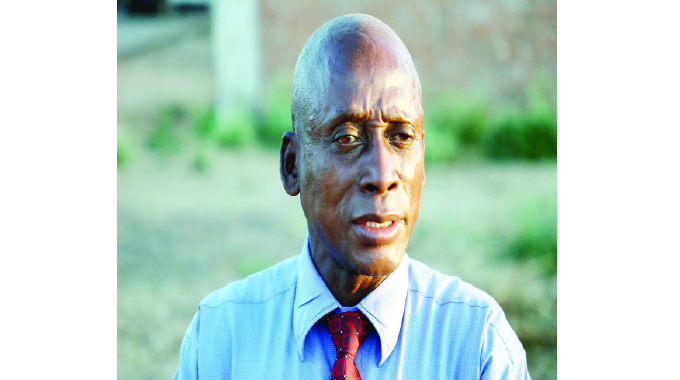Vision 2030: Failure not an option — ED

Prosper Ndlovu in Victoria Falls
PRESIDENT Mnangagwa has said his vision of transforming Zimbabwe into an upper middle-income economy by 2030 will not fail, as he vowed to continue pushing ministries and private sector players towards achieving set targets.
Despite the dampening impact of the Covid-19 pandemic and other unforeseen external shocks, the country’s economy has exhibited resilience with projections for key sectors such as mining, manufacturing and agriculture, pointing towards robust growth this year.
Riding on the ongoing comprehensive economic reform agenda instituted since the coming in of the Second Republic in 2018, the President said this should see Zimbabwe edging closer to the goal of being an upper middle-income country by 2030.
President Mnangagwa, who was officiating at the 2021 Chamber of Mines of Zimbabwe Annual Conference here yesterday, said the attainment of Vision 2030 will simultaneously assist the country to meet the global aspirations of the United Nations Sustainable Development Goals (SDGs) and Africa Agenda 2063.
“If we fail to reach the upper middle-income status by 2030 and I am still alive, I will go after you,” said President Mnangagwa, amid applause from delegates who included senior Government and private sector executives.
He told the gathering that his administration was doing all it could to fine-tune the ease of doing business to suit a thriving private sector climate, including ensuring that a stable macro-economic environment prevails.
President Mnangagwa said the mining sector, in particular, in which the country enjoys a higher comparative advantage, must be a springboard for economic recovery.
He said Zimbabwe is home to over 60 exploitable minerals, making prospects for the mining sector impact in sustaining economic development brighter as investment opportunities abound across the entire value chain.

Delegates following proceedings at the conference
Already mining alone contributes over 60 percent of export proceeds and is one of the largest employers. “The sector continues to steadily gravitate towards the attainment of its goal of a US$12 billion mining industry by 2023 through greenfield and brownfield investments.
“The institution of various measures targeted at attracting investments, enhancing exploration activities, as well as the opening of new and idle mines is set to further augment ongoing efforts,” said President Mnangagwa.
Guided by the Africa Mining Vision and the National Development Strategy (NDS1:2021-2025), the President said Zimbabwe was geared to ensure equitable and inclusive broad-based development through enhanced beneficiation of the country’s mineral endowments.
This thrust buttresses the Industrialisation Development Policy focus on beneficiation and export-led Industrialisation.
“The execution commitments for the establishment of beneficiation plants should be urgently pursued. The construction of base and precious metal refineries will create jobs and stem the export of local employment opportunities,” said President Mnangagwa.
He commended players in the ferrochrome industry for the ongoing establishment of chrome smelters while also noting progress in coal mining where millions of dollars are being invested in various coal to energy value chain projects in the Hwange area of Matabeleland North.
The coal projects are expected to increase power generation capacity, which will benefit mining investors. The Acadia Lithium project is also one of the promising value addition projects, which will see Zimbabwe developing lithium batteries among other high value modem economy components.
The discovery and exploration for oil and gas in the Muzarabani area is also expected to help Zimbabwe leap towards prosperity, said President Mnangagwa.

President Mnangagwa chats with Vice-President Chiwenga at the conference
He, however, warned that as such projects come into fruition, the defence services sector must be vigilant to repel terrorist tendencies, which have a penchant for disrupting progress on energy related investments in Africa as is the case in northern Mozambique’s coastal town of Palma in Cabo Delgado.
The President also said the Second Republic’s re-engagement drive has started bearing fruit evidenced by breakthroughs and progress in projects such as Caledonia Mining Corporation in Gwanda, Shamva Gold Mine, Eureka Gold Mine, Bravura, Anjin Diamond Mine and Tsingshan iron ore and steel projects, among others.
In line with the ideals of Vision 2030, President Mnangagwa said he expects these investments to benefit local communities through creation of jobs, provision of education and social amenities, infrastructure development and other initiatives.
“These should ultimately have multiplier investment effects that trigger sustainable value chain linkages,” he said.
“Considering that 2023 is only 18 months away, it is essential that the sector undertakes a review a d takes stock of progress made with regards to the realisation of the US$12bn mining industry by 2023.”
Vice-President Dr Constantino Chiwenga also attended the conference and impressed the need to ramp up mining output for the greater good of the economy.
Finance and Economic Development Minister, Professor Mthuli Ncube said the mining sector has huge opportunity and gave an outline of comprehensive fiscal support measures to assist growth of the sector. Mines and Mining Development Minister Winston Chitando stressed the need for exploration funding to unlock higher value for mineral deposits as he rallied the sector to push to meet set targets along their specific mineral focus.
Executives from the Chamber of Mines also outlined the industry breakthroughs, status of operations and challenges that impede growth.
Running under the theme “Navigating the turbulent times — sustaining growth of the mining industry beyond Covid-19”, the conference drew participation of senior industry leaders, key stakeholders and local and international experts who also joined virtually.










Comments